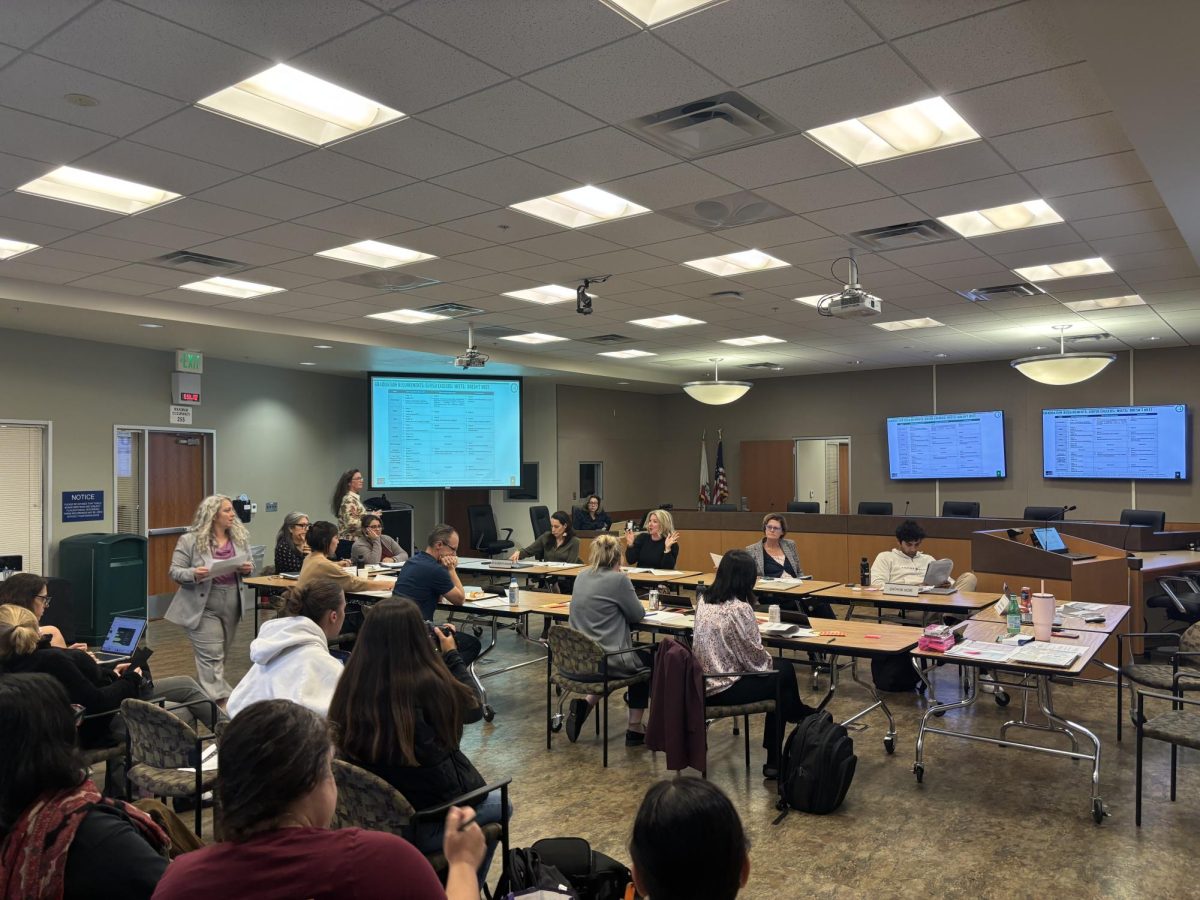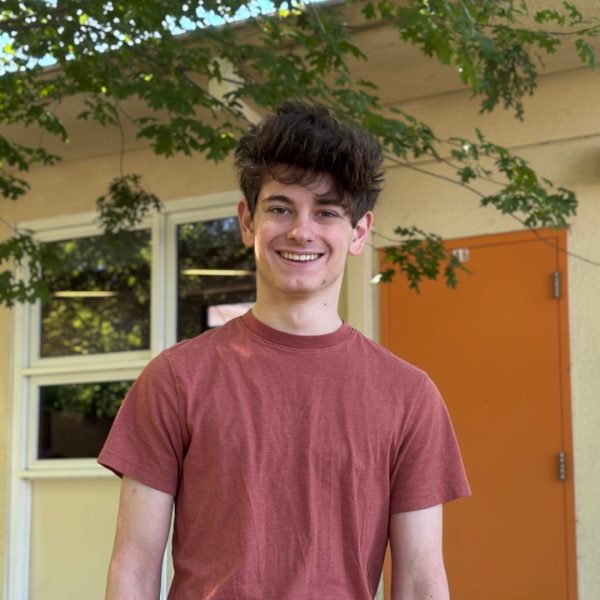On Wednesday, Oct. 16, 2025, the Sequoia Union High School District (SUHSD) board convened for a “study session” special meeting about student outcomes. Many public comments before the meeting called for the removal of the district’s ethnic studies classes. Later, board members discussed ethnic studies and whether it should be an optional course.
The study session was held to gain a deeper understanding of what students do after graduation, as well as to identify ways the board can support students in staying on track to graduate and be prepared for life after high school. Regular SUHSD board meetings allow public attendance via Zoom, but this special study session only had the option of attending in person. During study sessions, the board does not make any motions or take actions. In this meeting, differing from others, board members, key district administrators and other district experts on supporting students sat at tables facing each other. Near the end of the meeting, board member Rich Ginn questioned why the district should still require ethnic studies even when the state does not, as it takes up space in freshmen’s schedules where they could have another elective instead.
“It’s history,” board member Dr. Maria E. Cruz said. “It’s part of history we never hear about. You don’t get it unless you take the course, and everyone is required to take the course. [Otherwise] you’re not gonna get that history; There’s no way you’re gonna get that history, unless you go to college.”
After questioning why the district has graduation requirements exceeding those needed for the California State University system (A-G requirements), Ginn acknowledged the public comments advocating against ethnic studies.
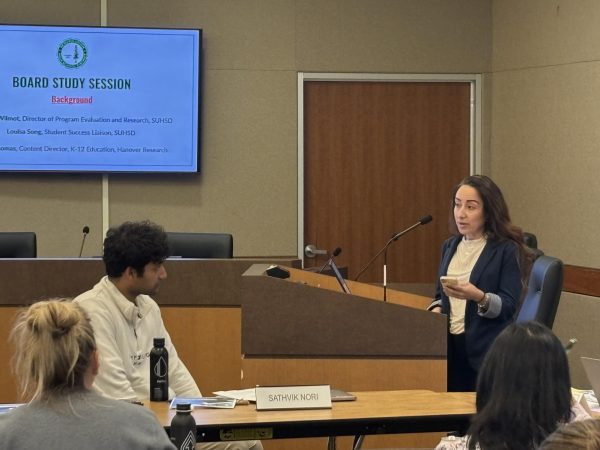
“We heard from a lot of speakers about ethnic studies in particular,” Ginn said. “I was disheartened by recent newspaper articles that were saying that it was a graduation requirement in the state. As we all know, ethnic studies was never a graduation requirement … It could possibly have become one, [but] the state chose to do something different … I wouldn’t require [ethnic studies], in particular.”
Ethnic studies was set to be a state-required graduation requirement, beginning with the Class of 2030, but the state never allotted money to the course, taking the graduation requirement out of effect. At the beginning of the study session, SUHSD director of program evaluation and research Dr. Diana Wilmot had presented some background information on current graduation rates and college enrollment rates. Wilmot said that 91% of seniors graduate, 1% take a fifth year, and the other 8% is unknown. Out of those who graduate, Wilmot said around 50% go to four-year colleges, 25% go to community colleges, and the other 25% is unknown.
“I can’t stop thinking about that 25% [of graduates] that we don’t know what they’re doing [post-graduation], and the 8% [of seniors] that have just disappeared,” board member Mary Beth Thompson said. “So I want to make sure that whatever we plan, [since] our time is a resource … we’re not forgetting about what’s best for all students. And I don’t have an answer. I just want to make sure that we’re not forgetting that. Is concentrating [our time] on one course, [ethnic studies], would [changing] that have changed [the outcomes for] those 8% that we don’t know where they are?”
Earlier this year, the SUHSD board approved an updated ethnic studies curriculum in a 3-2 vote, with Ginn and Sathvik Nori dissenting.
“My vote is clear already, so I’m not going to keep repeating,” Cruz said. “And there [are] so many pressing things that we need to discuss.”
SUHSD schools are now a bit past one quarter into the 2025-2026 school year, with this updated curriculum just beginning to be taught. During the first quarter of the school year, freshmen take a “Life Skills” class that then transitions into ethnic studies during the second quarter and continues for the rest of the year. Thompson is a former educator, and campaigned under the slogan “an educator for education.”
“Regardless of where people stand, a brand new curriculum [is starting] and I don’t have the data points from the students,” Thompson said. “No one [does], and it’s impossible right now for any single person to have a data point [on the new curriculum], because students haven’t taken the course yet. … As someone who’s taught a brand new curriculum … and I’m telling this personal experience, until it gets in front of the students, there’s still gonna be feedback coming.“
The larger debate about ethnic studies at SUHSD has been around since the class was first introduced, but continues to be a topic of discussion in the community.
“I feel like we had that conversation [about ethnic studies] several times,” District Superintendent Crystal Leach said. “I’m not aware of any new data points to bring to the board to help you make that decision.”
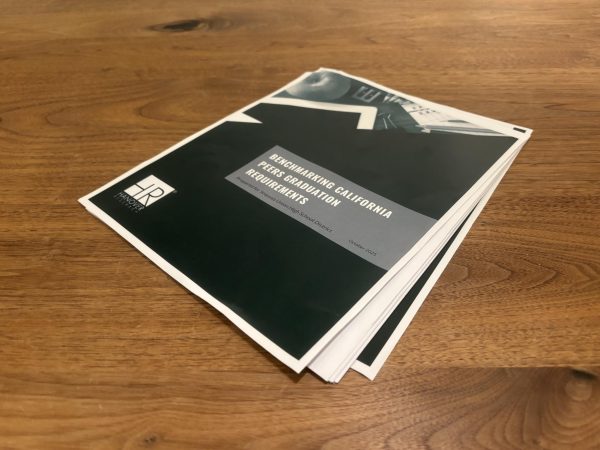
During the meeting, a presentation comparing graduation requirements and student outcomes to other similar school districts was led by Nicole Thomas, a content director of K-12 education at Hanover Research. This presentation was based on a document put together by Hanover Research for the district. One part of the presentation explained the process of finding similar, or “peer,” school districts.
“Hanover Research has a tool called the peer district generator,” Thomas said. “You can find it on our website, … you put in whether or not you want to look at peers nationally, state, or regionally, and then you can isolate out [variables] that you’re not interested in. So the ones that we focused on for the purposes of this study were enrollment size, [English learner] percentage, students of color percentage, special education percentage, poverty and median household income.”
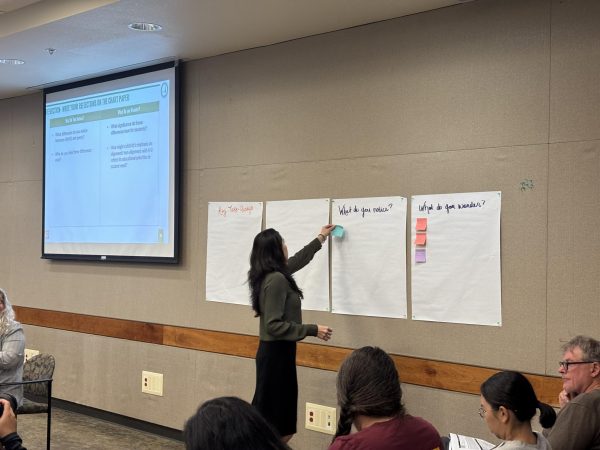
From that process, they had a list of 40 potential districts. From there, they narrowed the options down until they came up with 12 peer districts. In the presentation, Thomas focused on two peer school districts, Campbell Union High School District and San Dieguito Union High School District. Thomas then guided everyone through each graduation requirement each district had, and if they were failing to meet, meeting or exceeding both the state requirements and A-G requirements, comparing that to SUHSD.
At the very end of the meeting, the board voted, led by Thompson, to gather information on what state requirements are taught in the Life Skills course, so they could find out what moving that content into other courses would potentially look like. Board members also had the opportunity to look at some current student schedules and discuss what they noticed. The board briefly discussed putting the student schedules they reviewed onto their website, but decided against it since the schedules shown might require additional context.
“Perhaps there’s somewhere [we can show it] when we talk to freshman parents [during orientation],” Thompson said.


